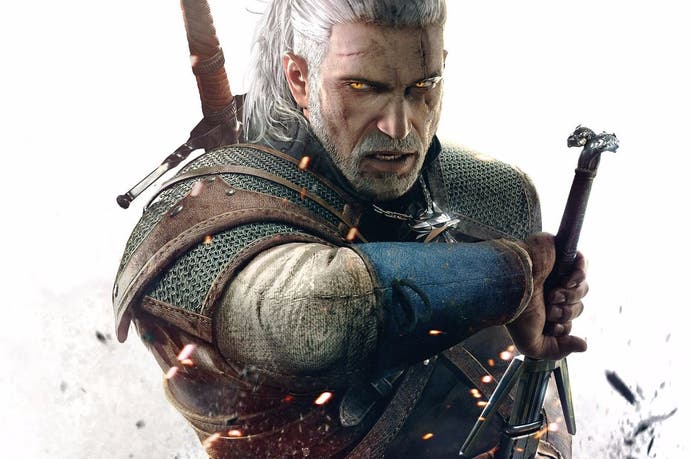Should you install The Witcher 3's day one patch?
UPDATED: Initial impressions of update 1.01 on PS4 added ahead of full performance analysis.
UPDATE 19/5/15 14:03: We've now had the opportunity to test the 1.01 patch on PlayStation 4, and can report that the FMV stuttering issue introduced in the Xbox One day one patch is much less of an issue on the Sony platform - video playback is much more consistent. Engine visual settings appear to be a match between the two consoles but curiously, the PS4 version does appear to run with a capped 30fps, giving a more consistent update than its Xbox One counterpart. We can also confirm native 1080p resolution throughout. We'll have head-to-head performance tests online as soon as possible.
Original Story: After a weekend of testing The Witcher 3 on Xbox One, it's fair to say installing its day one patch (version 1.01) is something of a double-edged sword. On the one hand, the 588MB file improves frame-rates slightly during play, while fixing minor bugs scattered across the game. In many ways it's a more polished experience with the patch - notably we have less geometry pop-in during cut-scenes, fewer instances of flickering shadows, and a great many more tweaks elsewhere.
But the downsides pack a punch too. It's apparent after switching between the game's default and patched states that these improvements come at a cost. Chief among these is the aggressive stuttering during pre-rendered cut-scenes. Essentially, encoded video files are used to portray the game's bigger plot points - such as the opening scene, re-caps after loading a save, and the dramatic end to the tutorial - while the game's engine is used for smaller beats in the story.
These videos weave in seamlessly amongst in-engine scenes, and do a great job of hiding loading screens. The catch: it's very easy to tell which type of scene is in play based on the frame-rate. Encoded video files stutter horribly after patch 1.01 is installed, with drops to as low as 22fps causing the playback to lurch in a manner that's impossible to ignore during any action. We've tested this several times with and without the update, and in every case an unpatched build of The Witcher 3 delivers a much smoother return, even if it's not perfectly locked at the intended 30fps.
Indeed, even with the patch removed, these videos still stutter owing to frame-pacing issues. However, the choppy playback on patch 1.01 is a greater evil overall - as shown midway through our analysis below (we've marked out one particular scene with a subtitle, though be warned this contains an early spoiler). Our theory is that these encoded video files are given a lower priority post-patch, while the background streaming needed to load the next segment of gameplay takes point.
A few other changes affect aspects of The Witcher 3's visuals. Texture filtering is downgraded during the early tutorial sequence - dropping to something that looks akin to 4x anisotropic filtering. With no patch installed, textures across the castle pathways are simply clearer at tight camera angles. However, we went to great lengths to test this after the tutorial section, and the difference disappears entirely between patch and unpatched versions. Outside in the White Orchard area, both use an absolutely identical form of filtering across the ground, and we suspect this setting may scale up and down based on the area.
Shadows also take a minor hit. Even accounting for variances in cloud positions (causing lighting to shift across plains), a perfect match in the time of day shows shadows are missing in spots on patch 1.01. This is likely related to optimising draw distances on Xbox One, as most patches of shade eventually fade in on approach - it's simply the case that the rendering range isn't as far-reaching as The Witcher 3's vanilla state. As a result, dithering is easier to catch on the patched release, at points where shadows make a transition to a fully filled-out state as you walk forward.
On balance, this downgrade only stands out when placing both versions side-by-side, especially given that the switch occurs at quite a distance. The only exception to this is around the Witcher's castle training ground - where foliage produces heavier shade across castle walls. Matching woodland shots also show a slight tail-off in the shadow density the further we look into the thickets, though quality up-close is the same. Besides these cases, it's clear CD Projekt makes an effort to improve Xbox One's performance during play, while not detracting too much from the visuals.
The big positive point for patch 1.01 is in performance, though it's not entirely ideal. What we get on Xbox One is an uncapped frame-rate that varies between 30-40fps, with v-sync engaged to avoid tearing. The unfortunate side-effect of not capping this at a straight 30fps is that frame-pacing wanders up and down the graph, causing the perception of stutter. Many of the frame-rate issues reported in The Witcher 3's early reviews are perhaps attributable to the game going over 30fps, rather than dipping beneath. It's something we'll check out once we are hands-on with the PS4 version - as that's the format used for most of the reviews highlighting the issue.
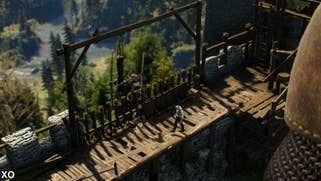

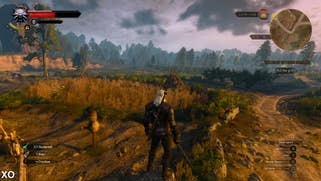
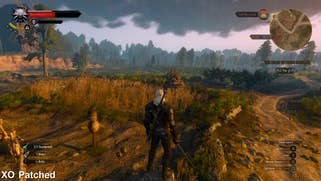
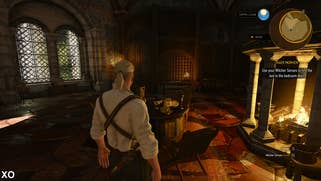
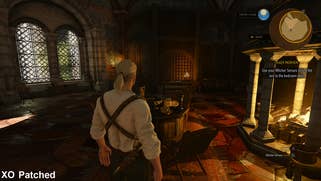
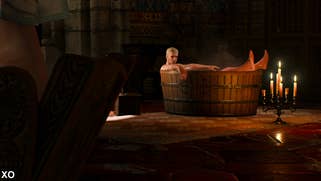

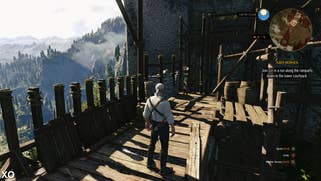
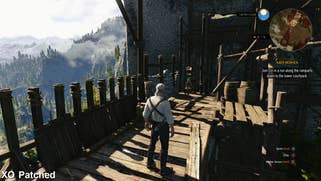

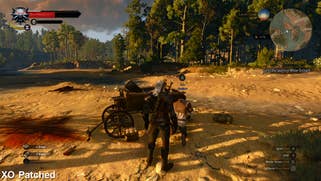
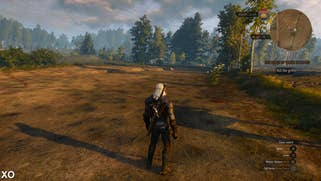

Based on the first few hours playing on Xbox One, the game is well optimised to theoretically hold a locked 30fps, and so it's unclear why the frame-rate isn't fixed in place for smoother results. However, it is an improvement over what came before; the day one update allows cut-scenes to run around 3-4fps faster on average. From our testing so far, patch 1.01 also keeps almost everything at (or above) the 30fps line, with far fewer drops when casting spells - at worst, we get 26fps lurches with no patch during a Griffin fight.
Xbox One's dynamic resolution scaling may also help to uphold this level of performance - in effect before and after the patch. In theory, this allows the framebuffer to switch between a 1600x900 resolution to a native 1920x1080 on the fly, seemingly based on GPU load at any given point. However, in practice this doesn't switch as much as we'd expected - The Witcher 3 is predominantly a 900p game, and the only scenes we've found to run at a full 1080p are the in-engine rendered title screen, and the video cut-scenes. Even reducing the GPU load by looking directly up to the sky shows the game is still rendering at a native 900p. We do notice some indoors scenes rendering at what seems to be a higher resolution than 900p, but even here, it is clearly not a full, native 1080p output.
With the PS4 and PC versions falling into our hands imminently, we hope to put the Xbox One release into context with its counterparts in an upcoming analysis. Early reports based on review code suggest that Sony's hardware produces a native 1080p output, but that frame-rate is an issue. Whether that's down to actual performance issues or the lack of consistency in frame delivery remains to be seen, but assuming that changes implemented in Xbox One carry over to PlayStation 4, there's every chance that we will see a tangible improvement. We'll report back as soon as we can.
Overall, the notion that any element of The Witcher 3's visual presentation being compromised in a patch is sure to be controversial, but having played the unpatched and patched versions side-by-side on Xbox One, the updated code is clearly preferable in most regards. The pared back shadow rendering isn't ideal, but it's unlikely to spoil your enjoyment of the game at all - and the performance boost is worthwhile. It's the issues with video playback that rankle most, and with the issue now out in the open, we hope to see a fix soon. On top of that, if CDPR can implement a 30fps cap with consistent frame-pacing, all the better.
